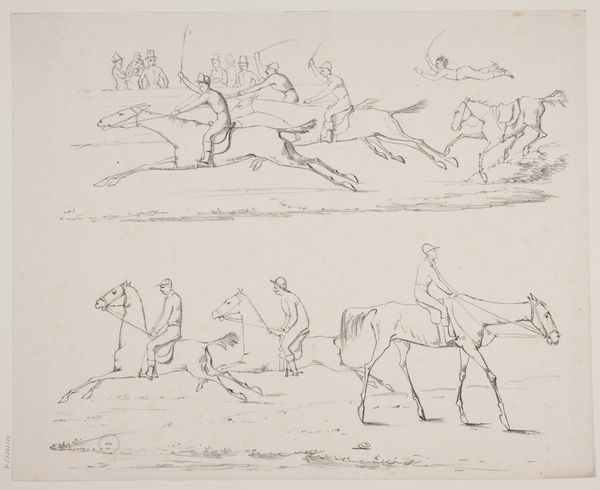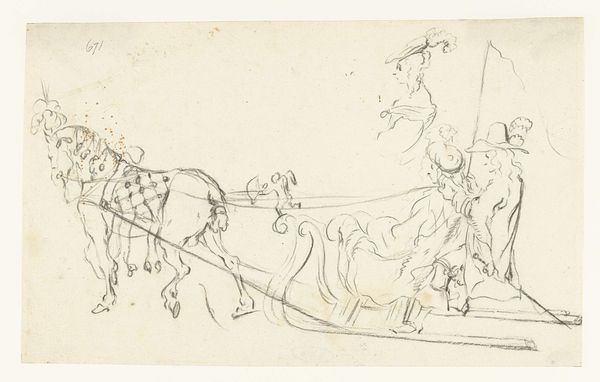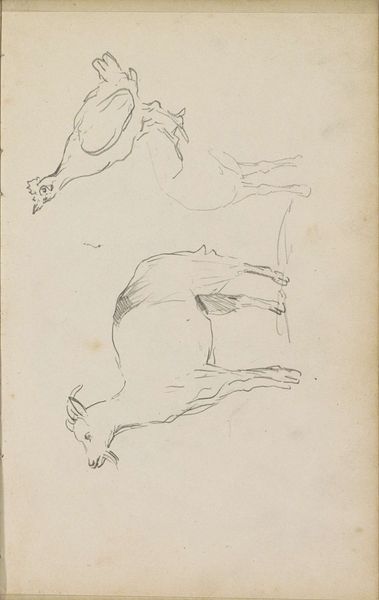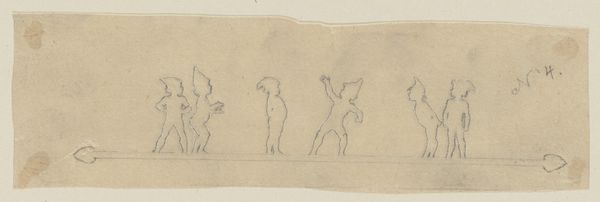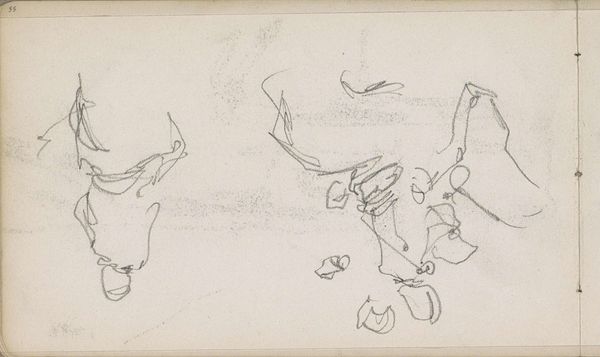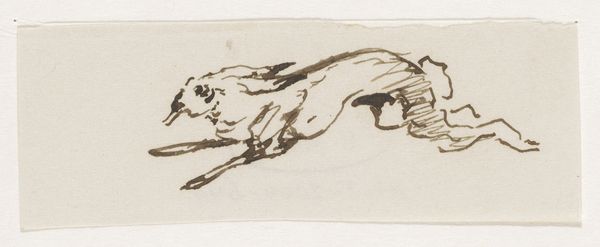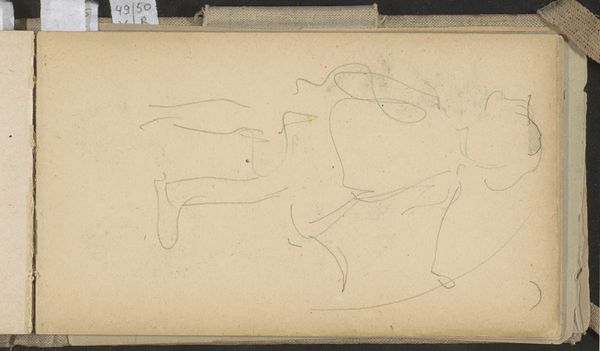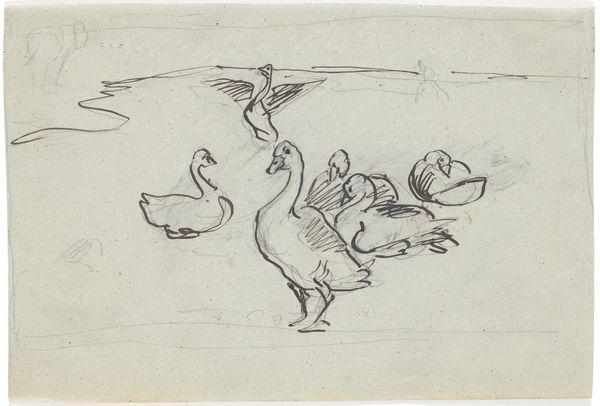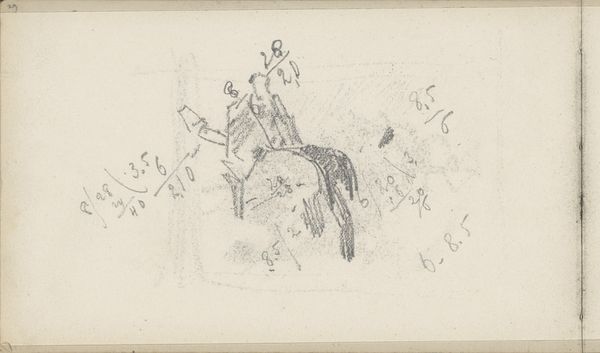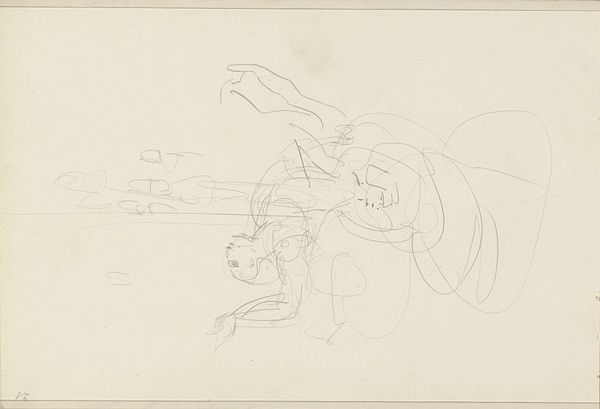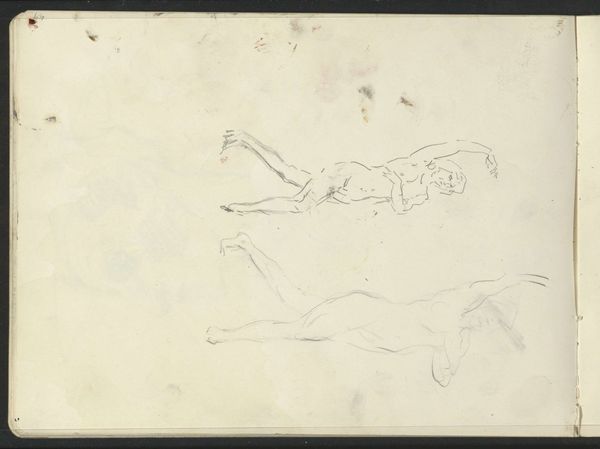
drawing, print, ink, pencil
#
drawing
#
ink drawing
# print
#
pencil sketch
#
landscape
#
etching
#
figuration
#
ink
#
romanticism
#
pencil
#
line
Dimensions: sheet: 2 11/16 x 3 3/4 in. (6.8 x 9.5 cm)
Copyright: Public Domain
Curator: This is William Pitts' "Sketch of a Child Riding a Dog," an ink and pencil drawing likely created between 1805 and 1840. What stands out to you? Editor: The immediacy. It's remarkably raw, like a fleeting impression captured in the simplest possible lines. There’s a kinetic energy even in this minimal depiction. Curator: The line work really defines the whimsical spirit of the composition. Do you notice the mythological undercurrent? A winged figure, possibly Cupid, atop an improbable steed? Editor: Certainly. The Cupid-like figure throws off the scale, amplifying the dreamlike feel, it creates a disorienting image of domesticity subverted by classicism. The overall simplicity allows the symbolism to breathe. Curator: Perhaps this "dog" symbolizes loyalty or servitude, with the child's figure—a winged cupid—asserting control. It resonates with deeper cultural narratives around power and innocence, almost allegorical. Editor: I'm more drawn to the lines themselves— the hesitant, almost searching strokes that form the dog's body, contrasted with the more assured curves defining the child. It gives the dog a vulnerable feeling, perhaps that is simply how rudimentary the rendering is, creating that feeling by chance alone. Curator: And consider the bottom flourish. Some kind of decorative floral motif, maybe a crest or heraldic element. What could that detail evoke within this deceptively simple drawing? Editor: It does introduce a sense of hierarchy or established order, doesn’t it? Is it anchoring the fantastical scene with a suggestion of societal context or adding a touch of nobility or formality to the composition? It does however serve as a solid base for this playful scene which needs it. Curator: Exactly. Pitts perhaps wanted to highlight the romantic notions and power that innocence brings, creating a sense of playful dominion, perhaps referencing colonial expansion or even dominance in domestic settings. It leaves you questioning what’s beneath this spontaneous sketch. Editor: Indeed, on second viewing I am fascinated by this work! Thanks. Curator: Yes, thank you!
Comments
No comments
Be the first to comment and join the conversation on the ultimate creative platform.

